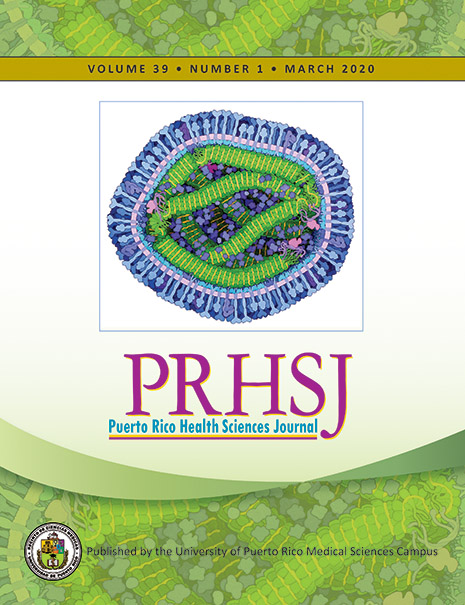Abstract
Objective: There is a high prevalence of human papillomavirus (HPV) infection in Puerto Rico, but little is known about the prevalence of Chlamydia trachomatis (CT) infection in healthy Puerto Rican women. Thus we aimed to evaluate the seroprevalence and association and the association between HPV and CT. Methods: This was a secondary data analysis from a cross-sectional, populationbased, study of HPV infection in women aged 16-64 years in Puerto Rico (2010-2013). Enzyme-linked immunosorbent assays (ELISA) were used to detect serum antibodies to CT and HPV. Logistic regression models were used to estimate the odds ratio (OR) for the association between HPV and CT serostatus. Results: The study included 524 women; mean age was 42 years. Overall, 97 (18.5%) women were CT-seropositive, 251 (47.0%) were HPV seropositive, and 57 (10.9%) had antibodies for both CT and HPV. Women who were CT-seropositive were more likely (p<0.05) to also be seropositive to any HPV type (ORadjusted: 1.7, IC 95% =1.1, 2.6), HPV 16/18 (ORadjusted: 1.6, IC 95% =1.0, 2.6) and HPV 6/11 (ORadjusted: 1.6, IC 95% =1.1, 2.6) than those CT-seronegative, after adjusting for possible confounding factors. Conclusion: Given the association between CT and HPV seropositivity, longitudinal studies to evaluate whether CT infection influences HPV incidence and persistence in this group are warranted.
Authors who publish with this journal agree to the following terms:
a. Authors retain copyright and grant the journal right of first publication with the work simultaneously licensed under a Creative Commons Attribution License that allows others to share the work with an acknowledgement of the work's authorship and initial publication in this journal.
b. Authors are able to enter into separate, additional contractual arrangements for the non-exclusive distribution of the journal's published version of the work (e.g., post it to an institutional repository or publish it in a book), with an acknowledgement of its initial publication in this journal.
c. Authors are permitted and encouraged to post their work online (e.g., in institutional repositories or on their website) prior to and during the submission process, as it can lead to productive exchanges, as well as earlier and greater citation of published work (See The Effect of Open Access).
